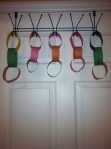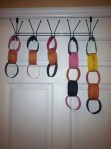
The frenetic scales loop race is heating up in my piano studio! Several weeks ago we began a quest to learn as many scales as we can before the end of the school year. As students have begun to complete the major scales we’ve started learning how to change them into minor scales. To help the kids hear the difference between the two I describe the minor scales as the sad sounding ones or scary ones and the major ones as the happy ones. Well, yesterday after showing a student how to figure out the minor scales on his own
I heard myself say,
“Let’s play some more scary scales”.
I immediately realized that this analogy went against everything I’ve done to try to help kids NOT see scales as scary, evil things!
Oh well, my bad!





